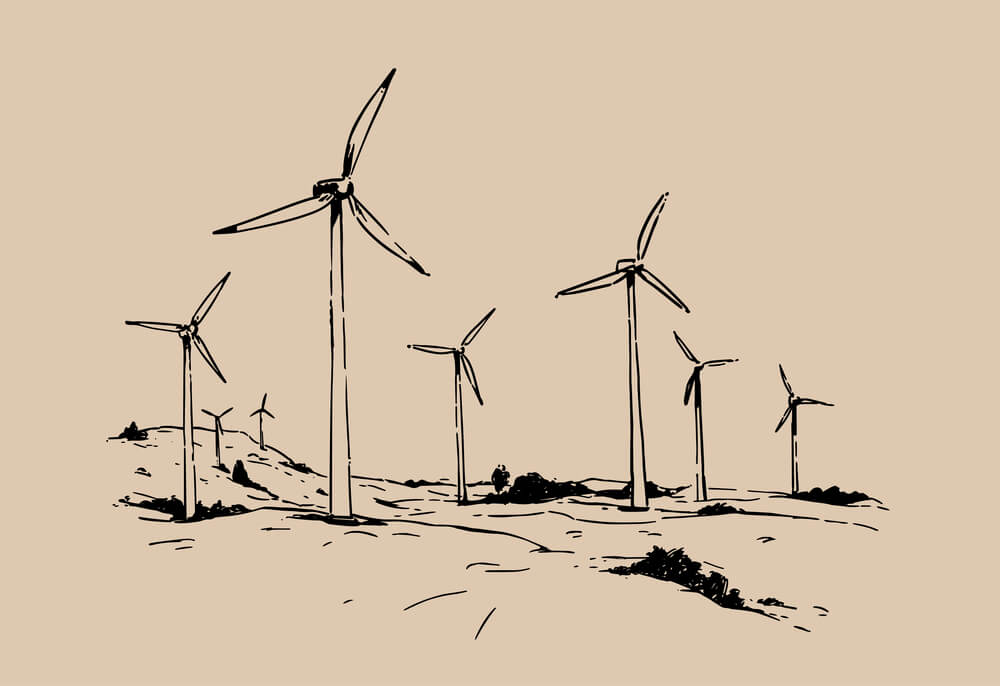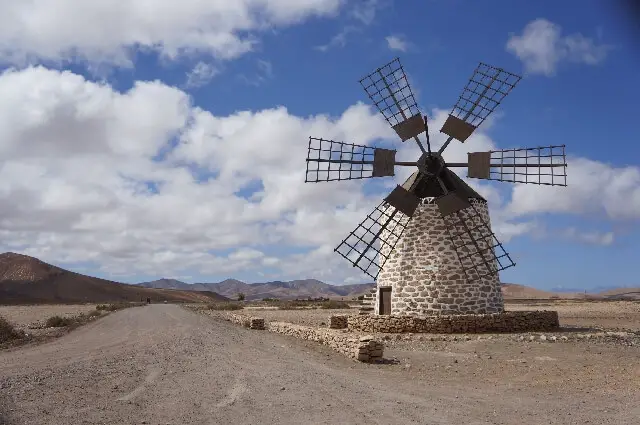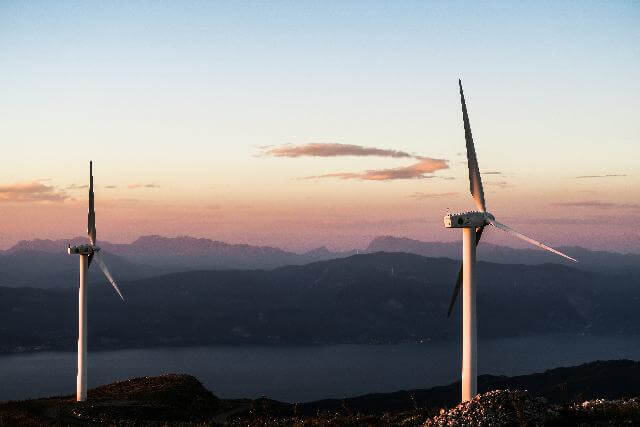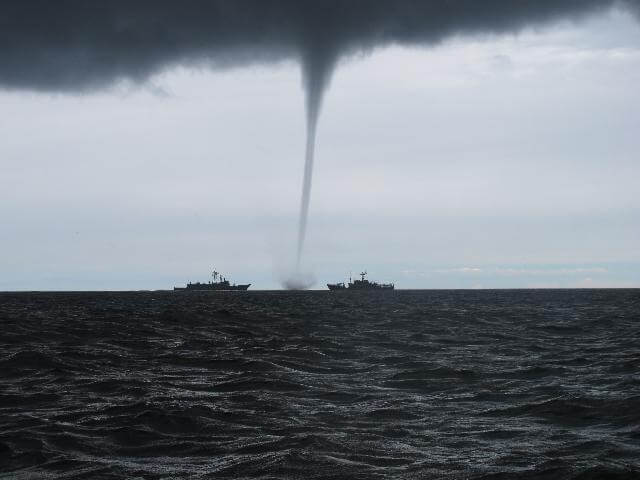Wind energy is among the most sustainable and cleanest forms of energy in the contemporary world. It doesn’t produce any toxic materials or global warming emissions.
Wind energy is vastly available, affordable, and inexhaustible and this makes it very suitable when compared to other fossil fuels.
Despite the vast benefits, it also comes with some challenges that negatively impact working.
One question that many people ask is does wind turbines cause pollution? Yes, though not very severe.
In this piece, we take you through the controversies you probably have heard regarding wind turbines.
Do Wind Turbines Cause Pollution?
Wind turbines do cause pollution- to a small extent however. Unlike fossil fuels such as natural gas or coal, wind turbines do not emit nitrogen oxides, particulate matter, or sulfur dioxide which pollutes the air.
While it may not pollute the air, many people, bodies, and other concerned agencies have reported other forms of pollution. Noise pollution stands out.
- Noise pollution is one significant public health issue that stands out whenever we mention wind turbines. The aerodynamic sound that the wind turbines generate comes with sound levels that are unpleasant to the ears.
Many people living close to wind turbines have complained about noise pollution so it is an issue that needs to be taken seriously.
- Another pollution issue that is evident with wind turbines is light pollution. Under some lighting conditions, the turbines create what are called shadow flickers.
This has visual effects on the community members bordering the windmill plants.
How Much Pollution Do Wind Turbines Make?
One question that many people ask about any source of energy is how green is it? It is a fact that wind turbines don’t emit carbon dioxide.
However, installing it is hectic and doesn’t lack carbon footprints 100 percent.
Installing the turbines involves many materials such as concrete, steel, fiberglass, copper, and other exotic things like dysprosium and neodymium.
These materials have some carbon footprints in them. For instance, manufacturing steel involves combustion of metallurgical coal. Similarly, making concrete results in carbon dioxide emissions.
But the real question is how significant is it.
Compared to other sources of energy such as solar, natural gas, and coal, wind turbines have negligible pollution on the air.
Specifically, turbines contribute around 11 grams of carbon dioxide for every kilowatt-hour of electricity it generates. For the same electricity amount produced, solar energy contributes 44 grams of carbon dioxide, natural gas releases 450 grams, and coal releases 1000 grams.
Nuclear energy beats all these with an astonishing 9 grams of carbon dioxide for every kilowatt-hour of electricity it generates.
Is the Amount of Pollution Increasing or Decreasing?
We need to know if we are making any progress. So is the amount of pollution increasing or decreasing? Well, it is decreasing.
Without a doubt, pollution is decreasing.
With changing technology, statistics are changing.
The manufacturing companies are making enormously long turbines with up to 360 feet long blades.
Such monsters could emit as low as 6 grams of carbon dioxide for every kilowatt-hour of electricity they generate. This is very low compared to the initial 11 grams.
Another trend that is going to lower the carbon footprint is the manufacture of turbine blades with green aspects in mind.
Again, green hydrogen which is electrolyzed by renewable power is replacing metallurgical coal to fire the old-fashioned blast furnace.
Moreover, the recycling of old turbine blades and photovoltaic cells helps reduce the carbon footprint at the end of the windmill projects.
Overall, these steps reduce the pollution that comes from using wind turbines to tap wind energy.
- Wind energy is an emission-free source of energy
Overall, wind energy is renewable. The energy it produces has limited effects on the environment when you compare it with other energy sources.
Wind turbines don’t emit pollutants into the air or water to cause any pollution.
Wind turbines compliment the energy produced by fossil fuels. Which therefore means it will reduce the total pollution of air caused by the emissions by these sources.
Are Wind Turbines Bad for the Environment?
Wind turbines are bad for the environment. The following points explain this point:
- Land use
- Public health
- Wildlife and habitat
Land use
Land turbines occupy a lot of lands that the community could use for other productive economic activities.
In hilly areas, the turbines can take a smaller landmass but on a flat surface, they may occupy vast lands because you have to space them.
It is the only perfect way to make sure they work effectively.
The wind turbine’s diameters range between 5 and 10 rotor diameters.
Together with other amenities including roads, they take up so much land that could otherwise be in some productive use.
Public health
Visual and sound impacts are two major public issues that wind turbines cause.
The sound generated affects the people around those areas though insignificantly.
Many times, people living around wind turbines complain about too much noise coming from the turbines.
However, the effects are not very extreme!
Wildlife and Habitat
Throughout time, there has been a debate on wind turbines and wildlife and their habitats.
Specifically, bats and birds are the species that people talk about a lot because wind turbines affect them the most.
Although the National Wind Coordinating Committee notes that the impact is negligible, it is still worth noting to protect the birds from such deaths.
What can be done to prevent these effects?
It is clear, wind turbines have damaging effects on the environment.
The effects range from land use issues, public health, and wildlife and their habitats.
But what can be done to mitigate these effects?
- Larger turbines: Repowering with larger wind turbines ensures that you reduce the overall speed of the rotating turbines. This not only benefits the birds but also reduces noise pollution.
- Good site: Good siting ensures that the land is put into proper use and there is no wastage whatsoever. Spacing the wind turbines well ensures that all the land is used properly.
Again, good sites where wildlife does not reach easily ensure there is no unnecessary injuring or killing of those animals.
- Going green: When acquiring the different tools you use in wind energy tapping, it is critical to use alternatives that significantly reduce the overall carbon footprint. For instance, electrolyzed hydrogen can be used to replace metallurgical coal in firing the old-fashioned blast furnace.
Although it is a practice that many people are following, it will be even better if they institute this as an industry standard for all other firms to follow.
Do Wind Turbines Pollute the Air?
Wind turbines do not pollute the air.
They do not have emissions that pollute either water or air. Wind turbines are a sustainable source of energy as they replace degrading fossil fuels.
The overall effect is reducing carbon dioxide emissions and total pollution of air.
Conclusion
You know that wind turbines produce one of the cleanest energies.
Despite this, there is still a carbon footprint associated with it.
Wind turbines cause pollution to the environment in terms of both sound and visual pollution.
They can also have negative impacts on the environment as they can harm both wildlife and bats.
Again, they wasteland because they take so much space that could otherwise be put to better and productive use.





